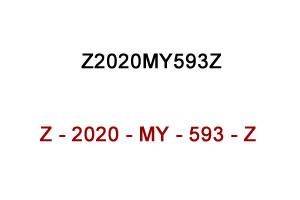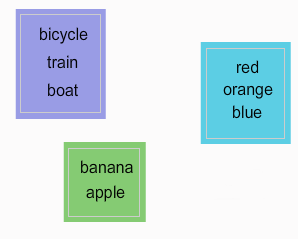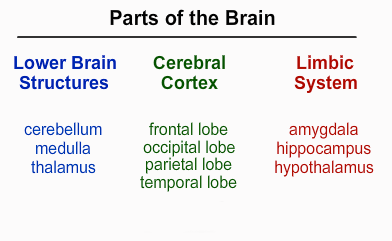Chapter 100. Organization Helps Encoding
Learning Objectives

Contrast the techniques of chunking, clustering, and forming hierarchies in the improvement of memory encoding.
Review
Review
Select the NEXT button to continue with the Review.

1. We remember organized information better than we remember random items. Why? Because organizing individual items into a meaningful structure helps during both encoding (registering information in memory) and retrieval (getting information out of memory storage).
Review
Review
Select the NEXT button to continue with the Review.

2. Chunking is a way of organizing bits of information into units of manageable size, such as grouping letters into words or words into sentences. This often makes the information more meaningful, and therefore easier to remember. It also can reduce the number of units that need to be held in memory storage.
Review
Review
Select the NEXT button to continue with the Review.

3. Chunking can work in two directions: If we need to remember a large number of individual items, we can group those individual items into larger chunks, rearranging them if necessary to create the meaning. But if we need to remember a long string of information in a particular order, we can break the string down into smaller chunks.
Review
Review
Select the NEXT button to continue with the Review.

4. Clustering is a way of organizing information into logical categories of related items, even if it means rearranging the order of the items. Here we have an unorganized shopping list of 10 items. By clustering the items by food type, we make the list easier to remember.
Review
Review
Select the NEXT button to continue with the Review.

5. A final way of organizing information is to form hierarchies—grouping items according to their place in a logical outline within a particular area of knowledge.
Practice 1: Organization Techniques
Practice 1: Organization Techniques
Select the numbers to see an example of chunking in action. Then select the “Continue” button.
An Example of Chunking
Organizing information during encoding makes it more meaningful, and that helps us remember the information. A simple form of organization is breaking a long string of information into shorter meaningful units, or chunks—a process called chunking.
For example, the string of numbers shown below is too long for most people to hold in their memory, at least if they are treating each number as a separate unit of information. However, if you know that the string of numbers represents a U.S. telephone number, you can divide the string into meaningful chunks, as shown when you select the numbers.
Chunking the information reduces the memory load and makes it more likely that you will recall the entire number accurately.
An Example of Clustering
In the case of a telephone number, the individual items (numbers) occur in a precise order. But if order isn't important, another organizational strategy to make information meaningful is to rearrange it into logical clusters of related concepts—a process called clustering.
For example, consider this 8-item list: bicycle, red, train, orange, boat, banana, blue, apple.
If the order of items in the list isn't important, you would probably remember the items better if you first rearranged them into clusters of "vehicles," "fruits," and "colors" and then encoded each item as a member of its category.
But if you did that, where would you put “orange”?
An Example of Hierarchies
When memorizing information for an exam, chunking and clustering may help a little. However, a better encoding strategy is to use hierarchies—rearranging the material into outline form before committing it to memory. First, cluster related items together to form categories. Then cluster related categories to form higher-order categories. Organization by hierarchies provides a meaningful structure for the material, thus improving both encoding and retrieval.
Practice 2: Demonstrate the Value of Chunking
Practice 2: Demonstrate the Value of Chunking
Select the “Begin” button to start the memory test. Then select the NEXT button and move to Quiz 1. You can try this test as many times as you like.
A series of 9 random numbers will appear, either one at a time or in groups of 3. After all the numbers have been presented, select the response box and type the numbers you saw in the exact order in which they appeared. Don't separate the numbers with spaces or any other character. When you have entered all the numbers you can recall, select the “Finished” button.
Quiz 1
Quiz 1
Match the terms to their descriptions by dragging each colored circle to the gray circle in front of the appropriate definition. When all the circles have been placed, select the CHECK ANSWER button.
Quiz 2
Quiz 2
Drag each term to the corresponding example. When all the terms have been placed, select the CHECK ANSWER button.



Conclusion
